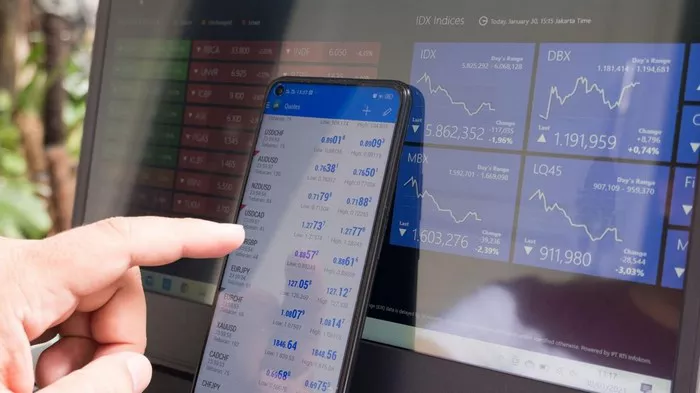In the dynamic world of financial markets, the buying and selling of options have become popular strategies for traders seeking to capitalize on market movements. A specific scenario that often captures the attention of investors is the prospect of buying call options today and selling them tomorrow. This strategy, commonly referred to as day trading options, involves executing both sides of the trade within a single trading day. In this article, we delve into the dynamics of this approach, examining the possibilities and considerations surrounding buying call options and selling them on the following trading day.
Understanding Call Options
Before exploring the intricacies of buying and selling call options within a short timeframe, it’s essential to grasp the fundamentals of call options. A call option is a financial contract that gives the holder the right, but not the obligation, to buy a specified quantity of an underlying asset at a predetermined price (the strike price) within a specified period (until the option’s expiration date).
When an investor buys a call option, they anticipate that the price of the underlying asset will rise. If the market price surpasses the strike price before the option’s expiration, the call option can be exercised, allowing the investor to buy the asset at the agreed-upon strike price.
See Also: Who buys a futures contract?
Day Trading Call Options
Day trading call options involves entering into a call option position with the intention of selling it within the same trading day. This strategy relies on capturing short-term price movements in the underlying asset. Traders engaging in day trading options typically aim to profit from intraday volatility, taking advantage of price fluctuations without committing to holding the option until its expiration.
One primary advantage of day trading call options is the potential for quick profits. If the market moves favorably, traders can capitalize on price changes within a single trading session, unlocking gains without the need to wait for the option to reach its expiry.
Risks and Considerations
While day trading call options can offer opportunities for quick profits, it also comes with inherent risks and considerations that traders should carefully evaluate. One significant risk is the potential for rapid and unpredictable price movements in the underlying asset. Options prices are influenced not only by the movement of the underlying asset but also by factors such as volatility, time decay, and changes in interest rates.
Moreover, the leverage inherent in options trading amplifies both potential gains and losses. When buying call options, traders typically pay a premium, which represents only a fraction of the underlying asset’s value. The leverage allows traders to control a more substantial position with a relatively modest investment. However, it also means that the impact of price movements is magnified, leading to the possibility of significant losses.
Another consideration for day trading call options is the impact of transaction costs. Buying and selling options involve commissions, fees, and bid-ask spreads, which can erode profits, especially for frequent and short-term transactions. Traders must factor in these costs when evaluating the viability of day trading options and ensure that potential gains outweigh transaction expenses.
Market Conditions and Liquidity
Successful day trading of call options is closely tied to market conditions and liquidity. Highly liquid markets provide better opportunities for executing trades at desired prices without significant slippage. Liquid options markets also tend to have narrower bid-ask spreads, reducing transaction costs for traders.
Conversely, illiquid markets may pose challenges for day traders, as it can be more difficult to enter and exit positions promptly. Thinly traded options contracts may exhibit wider bid-ask spreads, making it less cost-effective for traders engaging in frequent transactions.
Strategies for Day Trading Call Options
Several strategies can be employed when day trading call options, depending on market conditions and the trader’s objectives. One common approach is to capitalize on intraday trends and momentum. Traders may identify stocks or assets experiencing notable price movements and execute call option trades to profit from the continuation of these trends within the trading day.
Additionally, volatility-based strategies can be effective for day trading options. Traders may look for assets with expected price swings, entering call option positions to benefit from increased volatility. However, it is crucial to manage risk carefully, as heightened volatility can lead to rapid and substantial price fluctuations.
Furthermore, news-driven events can create opportunities for day trading call options. Positive developments, such as earnings announcements or favorable economic indicators, may prompt traders to enter call option positions to capture potential price spikes within the trading day.
Regulatory Considerations and Pattern Day Trading Rules
Traders engaging in frequent day trading activities, including day trading call options, should be aware of regulatory considerations and pattern day trading rules. In the United States, the Financial Industry Regulatory Authority (FINRA) has established rules for pattern day traders.
A pattern day trader is defined as an individual who executes four or more day trades within a rolling five-business-day period, provided that the number of day trades represents more than 6% of the individual’s total trades in the margin account for that period. Pattern day traders are subject to specific margin requirements and may face restrictions if their account balance falls below a certain threshold.
Conclusion
In conclusion, the prospect of buying call options today and selling them tomorrow presents traders with a strategy to capitalize on short-term price movements and intraday opportunities. While day trading call options can offer the potential for quick profits, it is not without risks and considerations. Traders must carefully assess market conditions, manage risk effectively, and be mindful of transaction costs.
Successful day trading of call options requires a disciplined approach, continuous learning, and a keen awareness of regulatory considerations. By incorporating sound strategies, risk management principles, and staying informed about market dynamics, traders can navigate the complexities of day trading call options and optimize their potential for success in the ever-evolving landscape of financial markets.


